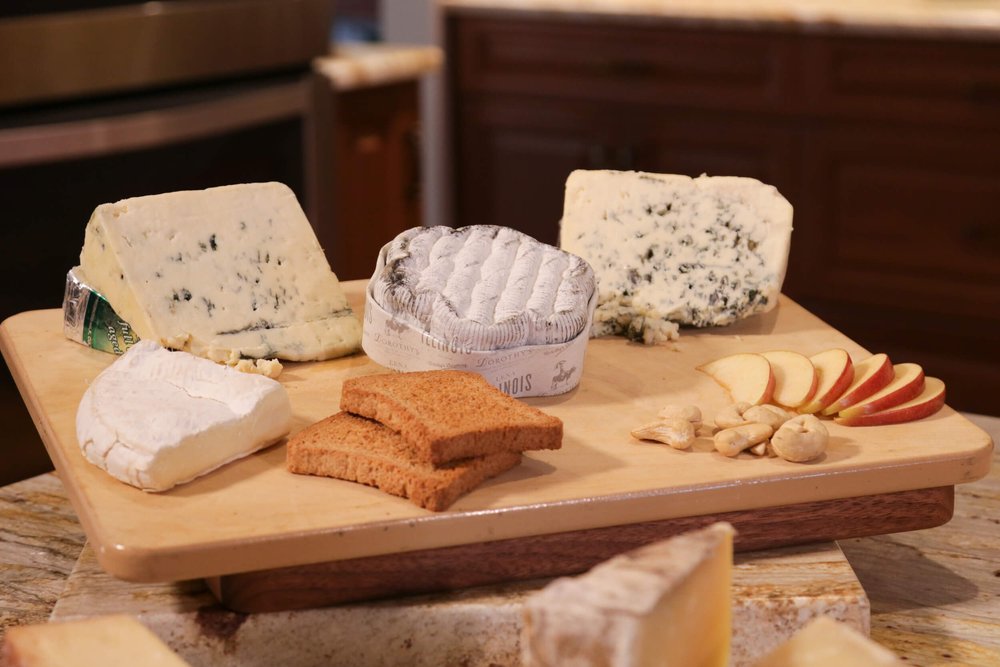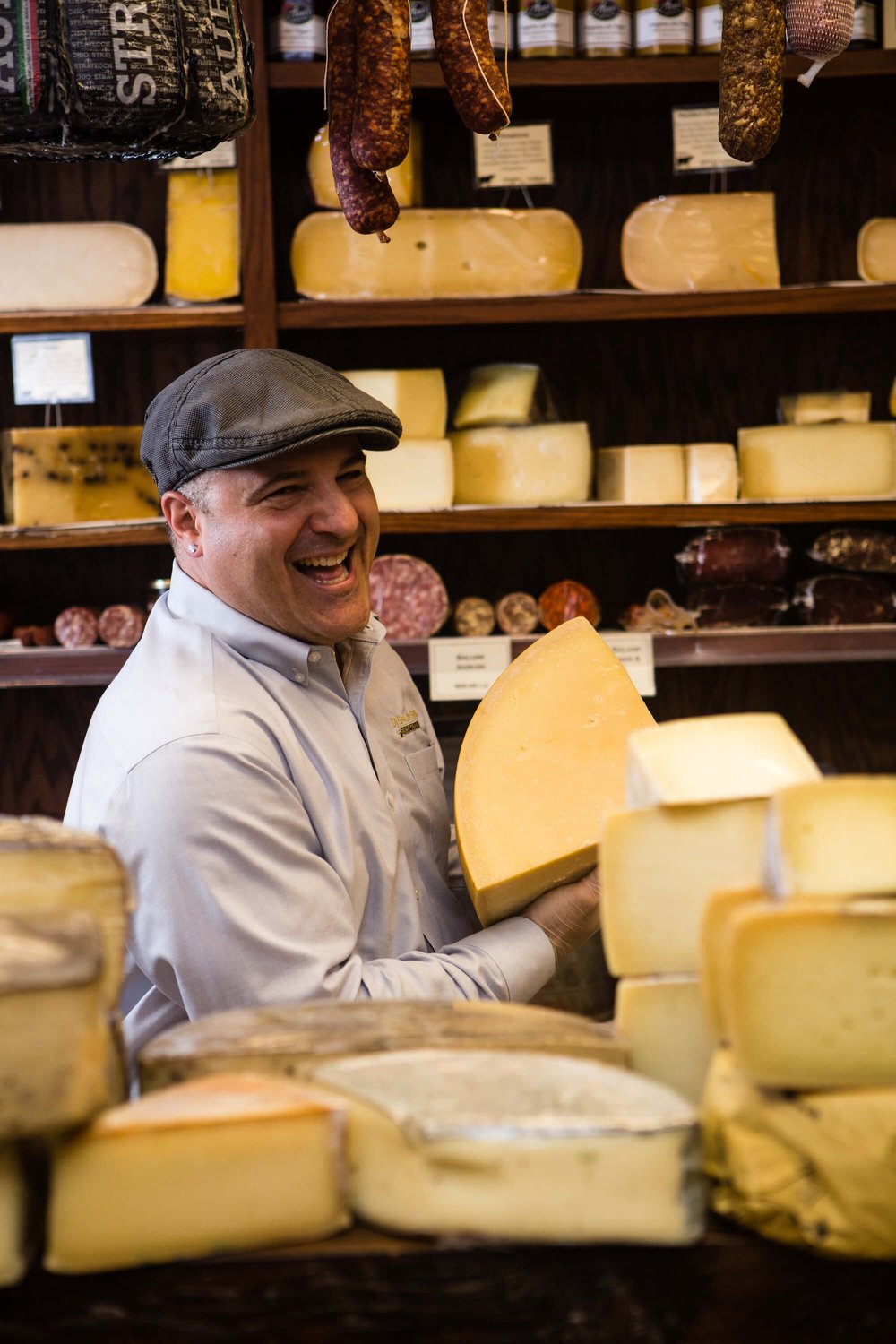
It may seem that there has never been a richer and more delicious era for the consumption of cheese. There are around 1,000 specialty cheesemakers in the U.S., and more than 1,000 varieties of cheese made in the U.K. alone. But the world of cheese is facing challenges economically and ideologically. We took a hard look at the numbers and spoke to experts to find out what they’re seeing on the ground, and how they are adapting.
Challenging Conditions
For the first time in two decades, the dairy industry in the E.U. is expected to contract by 2.3% this year, according to Eucolait, a high-volume dairy producer. A significant slump in dairy exports to China—down 20% year-over-year, is putting a serious drag on the sector.
But inflation is a factor too, driving down purchases of the pricier artisanal cheeses that have long defined the dairy culture in Europe. Inflation across the world is at a 45-year-high, with some cheese producers, such as Kerry Dairy Ireland, raising prices by an eye-popping 36.6%.
And in a shift that seems almost antithetical, Europeans, instead of reaching for their prized Gruyere, Asiago and Gouda—are suddenly stocking up on that processed orange stuff that comes in plastic packets.
Imports are up more than threefold, and while it’s still a drop in the bucket compared to European consumption of European cheese, the sudden interest in American faux-fromage is raising alarm bells.
The Plant Based Diet Challenge
In addition to watching their wallets, more consumers are keeping an eye on their dairy intake.
The dairy cheese market is projected to grow at a compound annual growth rate of 3.84% through 2028, according to Fortune Business Insights—not declining, and not completely flat, but certainly not robust.
The vegan cheese market, meanwhile, is expected to expand at a compound annual growth rate of 12.6% through 2030, according to projections from Grand View Research, a strong arc fueled largely by millennials and younger consumers concerned about animal welfare and climate change.
In a nod to the evolving interests of would-be cheese-lovers, producers are addressing concerns head-on and more and more are also producing plant-based cheese alternatives.
Changing the Channel
Chad Galer
For starters, cheesemakers across the world are changing their marketing channels. Spoiler: print is out, digital is in.
“We are trying to reach younger people where they are, on social media and through gaming influencers,” says Chad Galer, vice president of product innovation and food safety at Dairy Management, an outreach organization funded by 37,000+ dairy farmers in the U.S.
It also means a tweak in messaging. Instead of focusing on a cheese’s luxurious, gourmet aspirational side, there will be talk about the environment.
“The younger generation is passionate about the environment and animal care,” Galer says. “We strive to share how invested cheesemakers and dairy farmers are in sustainability efforts and how farmers are in fact stewards of sustainability.”
Maria Vittoria Finco, marketing manager of Italy’s Monti Trentini, and a fourth-generation cheesemaker based in Grigno, hears concerns over the environment loud and clear.
Maria Vittoria Finco
“It is well known that in general the cheese industry requires a lot of energy and water and it’s responsible for emissions of CO2,” Finco says. “Taking this and the environmental sensibility of younger generations into consideration makes it easy to understand the reluctance of such an audience to invest in cheese. As not only a company, but also as people that care about the environment, we understand this issue and that’s why we are actively reducing our energy and water consumption as well as the emissions of CO2.”
Addressing Health Concerns
Cheesemakers are also taking note of many of the food and health issues younger consumers are concerned about.
“We focus on the protein power of cheese, and how it actually has little to no lactose, allowing many people concerned about digestive issues to enjoy this form of dairy,” Galer says. “We also know that digestive health more broadly is a top concern. We work with social media influencers on TikTok, Instagram and Snapchat to share that in an authentic way.” Galer also points to cheese defining many viral TikTok recipes, like Baked Feta Pasta.
The desire for “cleaner” eating is another way Monti Trentini is finding inroads with younger would-be curd nerds. “Natural food products free of preservatives are increasingly important to younger people,” says Finco, who is focusing on sharing the message that “cheese is made only with three simple ingredients: milk, salt and rennet.”
Innovating the Product
.jpg?format=1000w)
Cheesemakers are also thinking outside of the classic wheel.
“A number of hybrid specialty cheese, like Cheddar and Parmesan mash-ups, or Brie and Cheddar, are gaining traction,” Galer says. “We are also seeing more cheeses with ingredients that are perceived as calming, like lavender or chamomile. I expect the trend to increase because the idea of calming is so important to Generation Z.” Producers have also expanded their portfolios with more flavors. Read more about flavored cheeses.
In Italy, where tradition is part of the way the entire culture defines itself, innovation that manages to respect history, is becoming increasingly important.
“We have developed a line of cheese that combines artisanal production methods and new flavors,” says Finco. “We have a line of Truffle Caciotta Cheese with two distinct products, both with real pieces of truffle inside. One is a fresh Caciotta cheese aged only a couple of weeks, soft in texture and white in color, the other one is an aged Caciotta cheese, covered by a black coating, more granular in texture and more yellow in color.”
Emilio Mignucchi
Artisan purveyors, meanwhile, treat each cube of cheese as a hand-sale and an opportunity.
“We have a core group of young folks who come in interested in good food and want a great food experience,” says Emilio Mignucci, vice president at Di Bruno Bros., a Philadelphia-based gourmet food emporium. “Let’s face it, cheese is not inexpensive, and really well-made cheese can be very pricey. It can be intimidating because you want to spend wisely. As Michael Pollan explained in The Omnivore’s Dilemma, and this I believe is very relevant today—real food, well-made and sustainably grown, comes with a cost.”
Mignucci sees it as his personal mission to share not just the flavors and history of the cheese he sells, but the stories of the families behind them.
“When they not only sample the cheese, but understand the social and economic impact that the cheese has for the families and places it comes from, their appreciation for it increases,” he says.
The taste of the cheese is important—even essential. But presenting it in a way that it appeals to the new generation? That—like the crafting of great cheese—is both an art and a science.
